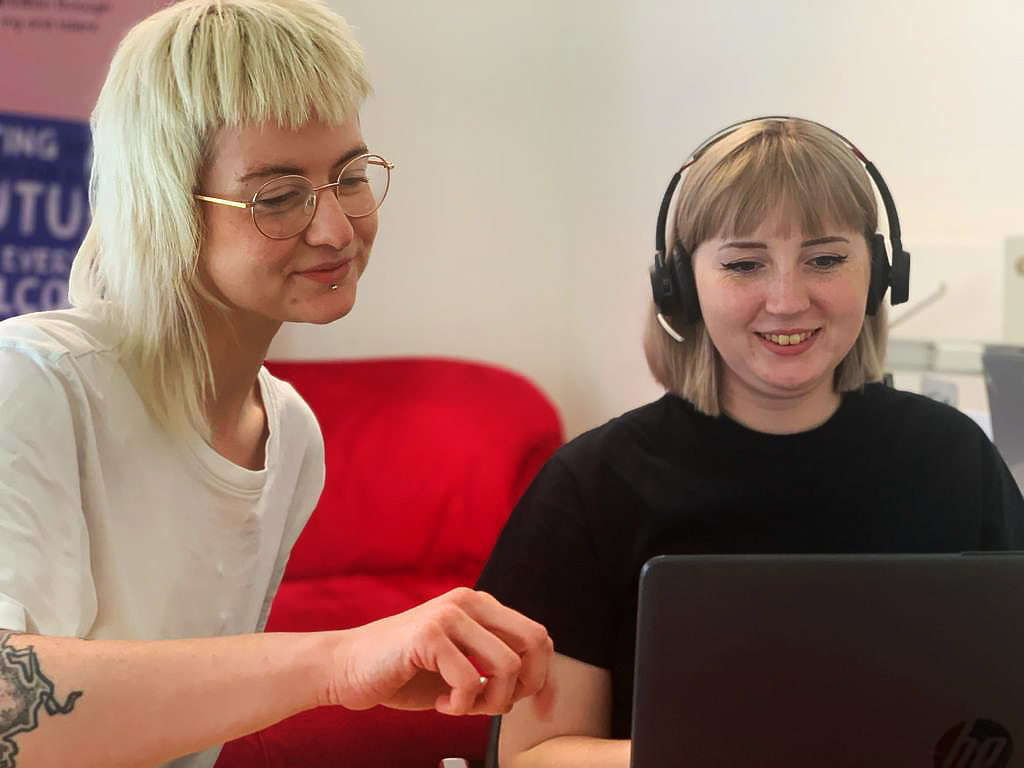Welcome to your enablement hub
Streamlining an approach that is navigable and effective
With D&A’s Enablement Hub, you have everything you need to take you from an initial conversation about barriers, to the tailored support that reduces those barriers.
We’ll guide you through each step of an individual’s journey through the Enablement Hub, so that everyone in the organisation- from individual employees to leadership teams- has a stronger understanding of how we can all remove disabling barriers and celebrate the strength of diversity.


What does the process look like?
We've broken down every stage of the Enablement Hub process; just select each box to find out more.
- An individual has a discussion with their line manager where they highlight barriers they may be facing in the workplace. The line manager then refers the individual to the Health & Safety team.
- An individual independently refers themselves to the Health & Safety team.
Next, the Health & Safety team meet with the individual for an initial discussion and prepare to refer the individual to the D&A team.
The D&A Operations team receive a referral from Fujitsu’s Health & Safety team.
D&A will respond to the referral and contact the individual within one working day to:
- Introduce D&A
- Send over a pre-assessment form for the individual to complete
- Arrange a date for the individual’s assessment
The D&A team will usually attempt contact with the individual at least three times: firstly via a phone call and email, and then two follow-up emails if we are not able to make contact initially. If we are unable to make contact after one month, we will let the Fujitsu Health & Safety team know.
A D&A Needs Assessor will meet with the individual for their assessment.
A Needs Assessment is a one-to-one discussion that gives the individual space to think about the barriers that prevent them from reaching their full potential at work. As they talk through the barriers they experience, the Needs Assessor will suggest the solutions available to the individual to help them break down or mitigate these barriers.
The Needs Assessor will create a report summarising the discussion and recommended solutions. The individual receives a draft copy of the report and has the opportunity to request any additions or amendments.
The Health & Safety team and employee both receive a final copy of the report, with the Health & Safety team’s copy also including the cost of all recommendations. Fujitsu raise any necessary queries before approving the report.
The D&A team communicate with the Health & Safety team to arrange delivery of the recommended support.
What support is available?
Depending on the needs, working life and preferences of the individual, they may be recommended any of the following:
- Hardware
- This includes any ergonomic equipment, for example adaptive computer mice and keyboards, supportive chairs, accessible desks and noise cancelling headphones.
- Software
- Usually, this will comprise of assistive technology and tools designed to integrate with an individual’s working life. It could include software such as Dragon (speech-to-text and dictation), Read and Write (text-to-speech and screen masking) and Global Autocorrect (spelling and grammar support).
- For more examples of assistive technology, check out D&A’s resources page for guides, free trials and demonstrations!
- Assistive technology training
- One-to-one, holistic training that ensures an individual has the tools, skills and confidence needed to make the most of their assistive technology. An assistive technology trainer not only explains the functions of the technology, but also explores how it could best integrate into the individual’s work and helps them develop supporting skills and strategies. It’s completely tailored to the individual’s needs and working styles.
- Mental health mentoring
- Specialist, one-to-one mental health support delivered by a qualified and board-accredited mental health mentor. Mentoring supports an individual to develop the skills, strategies, and self-esteem to boost and safeguard their wellbeing in the workplace and beyond. Their mentor will work with the individual to explore and break down the barriers and blocks they’re experiencing in the workplace, covering anything from stress management to confidence.
- Workplace strategy coaching and co-coaching
- Strategy-focused, one-to-one coaching that equips an individual with the skills and practices to overcome or mitigate the barriers they experience in the workplace. This could include developing time management strategies, exploring self-advocacy, and organisational skills.
- The individual may also be recommended co-coaching. This involves their line manager joining them in one or two coaching sessions for a joint exploration of the barriers they face in communicating and working together so they can develop a more positive and productive working dynamic.
Any questions? Get in touch with the D&A Team; we're here to support you to make the most of everything the Enablement Hub has to offer!
Contact us